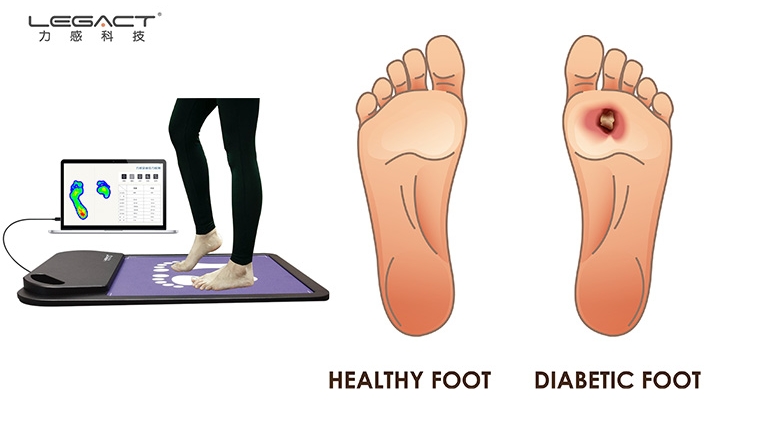Thin-film pressure sensors, known for their high sensitivity and flexibility, show great potential in the field of diabetic foot disease detection. Diabetic patients often face foot problems such as diabetic foot ulcers and neuropathy. The application of thin-film pressure sensors can effectively monitor and manage these issues, thereby improving patients’ quality of life.
Key Advantages
Precise Pressure Monitoring: Thin-film pressure sensors can accurately detect the pressure distribution in different areas of the foot, helping to identify high-risk zones. Due to circulatory problems and nerve damage, diabetic patients are prone to foot ulcers. By monitoring the foot’s pressure distribution, abnormal high-pressure areas can be detected early, preventing the occurrence of ulcers.
Real-Time Data Feedback: These sensors can record and transmit foot pressure data in real-time, providing instant feedback. Patients and healthcare providers can access this data through smart devices, allowing for timely adjustments in care plans. This real-time monitoring helps detect problems early and reduces the risk of severe complications.
Personalized Care Plans: Based on data from thin-film pressure sensors, healthcare providers can develop personalized care plans for diabetic patients. For example, adjusting the design of insoles or shoes to relieve pressure in specific areas of the foot can prevent the formation and worsening of ulcers.
Prevention and Rehabilitation: For patients who have already developed foot conditions, thin-film pressure sensors can help monitor the progress of rehabilitation. By accurately recording changes in pressure distribution, healthcare providers can assess the effectiveness of treatments and adjust them as needed, promoting faster recovery.
Application Examples
- Smart Insoles:
- Smart insoles with built-in thin-film pressure sensors can monitor foot pressure distribution in real-time, helping diabetic patients adjust their gait, reduce high-pressure areas, and prevent ulcers.
- Medical Monitoring Devices:
- Foot pressure monitoring devices used in hospitals or homes can collect data through thin-film pressure sensors, providing detailed foot pressure maps for doctors to assist in diagnosis and treatment.
- Rehabilitation Care Systems:
- During rehabilitation, thin-film pressure sensors can monitor changes in foot pressure, helping to evaluate recovery progress and ensure the effectiveness of care measures.
Conclusion
The application of thin-film pressure sensors in diabetic foot disease detection offers precise, real-time monitoring and personalized care plans for patients. Through high-precision pressure data analysis, healthcare providers can better prevent and manage diabetic foot complications, significantly improving patients’ quality of life. As technology advances, thin-film pressure sensors will play an increasingly important role in diabetes management.



